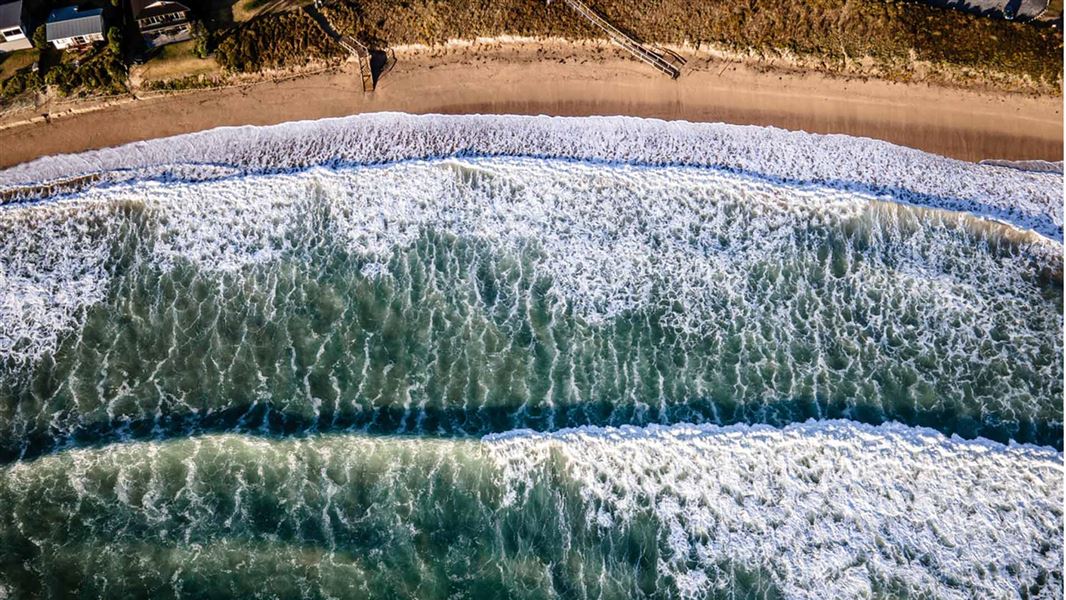Archived content: This media release was accurate on the date of publication.
Date: 15 June 2023 Source: DOC and The Nature Conservancy Aotearoa NZ
The Department of Conservation (DOC) and The Nature Conservancy Aotearoa New Zealand (TNC NZ) hosted a one-day hui in Nelson in April to bring together the many organisations, groups, and individuals with an interest in coastal blue carbon.
“Blue carbon” is the carbon captured and held in marine ecosystems. Coastal wetlands such as mangroves, saltmarshes, and seagrass meadows are major carbon sinks and punch above their weight in terms of carbon sequestered per area, with some able to store many times more carbon than forested areas.
Many of these coastal areas are shrinking and at risk from climate-related threats including sea level rise, sedimentation, and encroachment by urban and agricultural development.
There is growing interest from private and public landowners in using carbon credits and revenue from coastal wetland restoration projects to finance the work, providing a virtuous cycle for biodiversity protection.
Representatives from TNC NZ, DOC, local and central government, Crown Research Institutes and universities, private researchers, and iwi and hapū discussed how blue carbon markets could be used to fund coastal restoration, how to engage local communities in restoration projects, how to improve restoration efforts, and how science and mātauranga Māori can be woven together in these projects.
The event builds on a hui held in March by Tasman Environmental Trust to discuss the results of their Core and Restore project.
“Aotearoa has developed a lot of expertise on the active restoration of these coastal blue carbon habitats with methods such as reinstating tidal flow, planting, or removing livestock access,” said Helen Kettles, Technical Advisor - Marine Ecosystems at DOC and hui co-organiser.
“And more people are beginning to realise, with our long coastline, restoring blue carbon could have a huge part to play in fighting climate change.”
Coastal wetlands are some of the richest ecosystems in the world. Aside from storing carbon, these ecosystems provide habitat for threatened wildlife and plants, offer protection from coastal erosion and sea-floor sedimentation, provide water filtration and safeguard against rising sea levels.
Hui co-organiser Olya Albot, Nature-based Solutions Project Manager at TNC NZ, said that blue carbon is a viable, nature-based solution to climate change — and particularly relevant to Aotearoa New Zealand.
“The restoration of blue carbon sites has the potential to address the dual crises of climate change and biodiversity loss,” said Olya.
“TNC is working across the globe to accelerate the protection of coastal wetlands and highlight the potential value of blue carbon. This work is highly applicable to New Zealand, and we are working with DOC and others in Aotearoa to support and provide expertise for landscape-scale wetland restoration work here.”
Attendee Dayveen Stephens, Pou Taiao/Environmental Manager Ngāti Tama, said she found the workshop very informative. “Networking and sharing ideas were the highlights for me.”
TNC NZ and DOC will share a summary detailing the key findings, but potentially the most valuable outputs from the hui were the connections built around the table, sharing knowledge, and the idea of building a Community of Practice through which participants can develop their own areas of expertise and interest, and then share their findings with the larger community.
“The real power of this project comes from the connections we build with each other,” said Helen Kettles.
“Any response to climate change should emphasise diverse people and groups working together, designing solutions side-by-side and sharing our discoveries and insights.”
The Nature Conservancy Aotearoa New Zealand website
Contact
For media enquiries contact:
Email: media@doc.govt.nz
